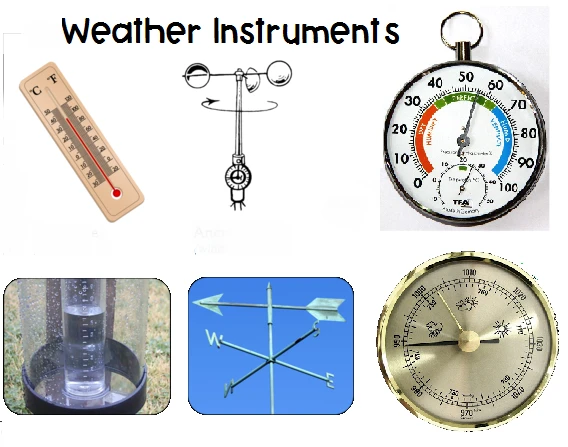
# Weather Instruments: Tools for Measuring Atmospheric Conditions
## Understanding the Essentials of Weather Measurement
Weather instruments play a crucial role in meteorology, helping scientists and enthusiasts alike understand and predict atmospheric conditions. These tools provide valuable data that forms the foundation of weather forecasting and climate studies.
### The Most Common Weather Instruments
Several key instruments are used to measure different aspects of weather:
1. Thermometer: Measures air temperature
2. Barometer: Measures atmospheric pressure
3. Hygrometer: Measures humidity levels
4. Anemometer: Measures wind speed
5. Wind vane: Determines wind direction
6. Rain gauge: Measures precipitation amounts
## How These Instruments Work Together
When used in combination, these instruments provide a comprehensive picture of current weather conditions. For example, a sudden drop in barometric pressure combined with increasing wind speed might indicate an approaching storm system.
### Modern Advancements in Weather Instrumentation
Today’s weather instruments have evolved significantly from their early counterparts:
– Digital sensors provide more accurate readings
– Automated weather stations can transmit data remotely
– Satellite technology complements ground-based instruments
– Computer models process vast amounts of instrument data
## The Importance of Proper Instrument Placement
For accurate measurements, weather instruments must be properly sited:
– Thermometers should be placed in shaded, ventilated areas
– Anemometers need to be positioned well above ground obstructions
– Rain gauges should be placed in open areas away from buildings and trees
### Maintaining Your Weather Instruments
Regular maintenance ensures accurate readings:
– Clean instruments periodically
– Calibrate devices according to manufacturer specifications
– Protect electronic components from moisture
– Replace batteries in digital devices as needed
## Weather Instruments in Everyday Life
While meteorologists use sophisticated equipment, many of these instruments are accessible to the public:
– Home weather stations provide local data
– Smartphone apps can display instrument readings
– Many watches now include basic weather measurement functions
– Car dashboards often show outside temperature
### The Future of Weather Measurement
Emerging technologies promise even more precise atmospheric monitoring:
– Miniaturized sensors for more detailed data collection
– AI-powered analysis of instrument readings
– Drone-mounted instruments for atmospheric sampling
– Improved satellite instrumentation for global coverage
Understanding these instruments helps us appreciate the science behind weather forecasting and prepares us to make informed decisions based on atmospheric conditions.
Keyword: instruments of the weather